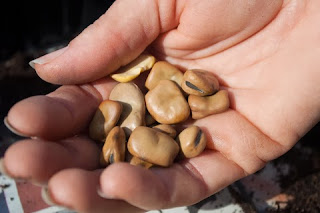Roots, brassicas and others in Sprout-kale
Our Anglo-Saxon ancestors named February ‘Sprout-kale’ since cabbages and kale were about the only edible vegetables showing signs of life. Nowadays of course we can get what we want all year round, but at a cost to the planet.
Alternatively, even in a small plot, we can grow our own and nothing beats fresh veg straight from the garden. It’s important though, to keep the soil’s nutrients balanced by not cropping the same vegetable in the same place every time. You also want to avoid increasing soil-living pests and diseases. So, we do what the farmers do and rotate our vegetable crop and the easy way to do this is to create a chart.
In YEAR 1 we ideally do roots: carrot, parsnip, beetroot, chicory, potato, Jerusalem artichoke. In YEAR 2 we plant brassicas: broccoli, cabbage, cauliflower, Brussels sprouts, kale, kohl robi, swede, turnip and in YEAR 3 it’s others: beans, celery, cucumber, aubergine, celeriac, leek, lettuce, endive, marrow, peas, spinach, onion, tomato, sweet corn.
February and going into spring is usually a good time to prepare the seedbed if the soil is not too sticky. If you dug the area over in winter, then break down the clods and apply fertiliser, working it well into the soil to avoid scorching new roots. Check your seed packets for sowing times and don’t sow too early, too deep or too thickly!
- Start chitting early seed potatoes upright in egg boxes or trays with the eye end uppermost
- Clear old cabbage and cauliflower beds
- Sow broad beans in a heated greenhouse or frame
- Check overwintered crops such as brassicas, leeks and onions, clear away diseased or damaged leaves
- Sow leeks, onions and celeriac under cover
- Lift and store parsnips
- Sow parsnips outdoors
- Mulch asparagus and artichokes with well-rotted manure or garden compost
- Sow parsley in a warm, sheltered place
- Sow Brussels sprouts, cabbages, carrots, cauliflowers, lettuces, onions, leeks, parsnips, peas, radishes, spinach, tomatoes and turnips


No comments:
Post a Comment